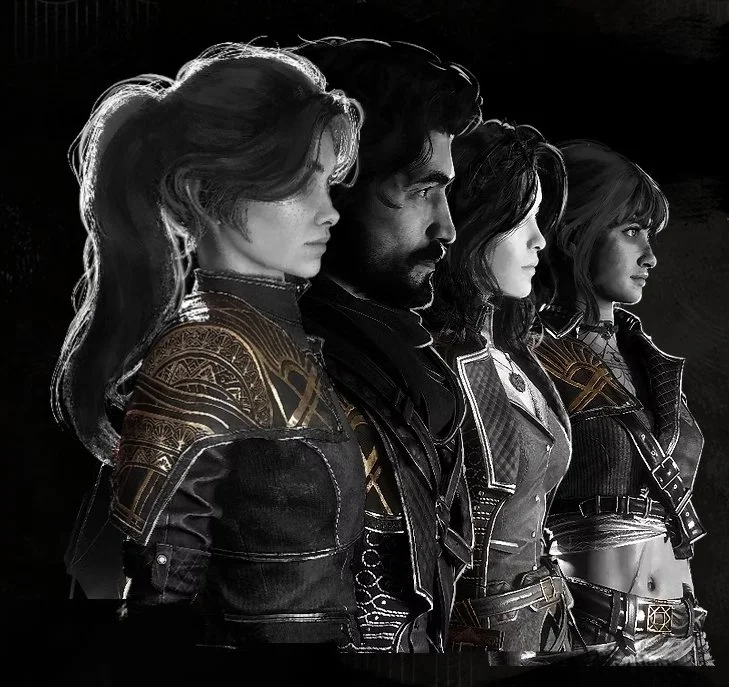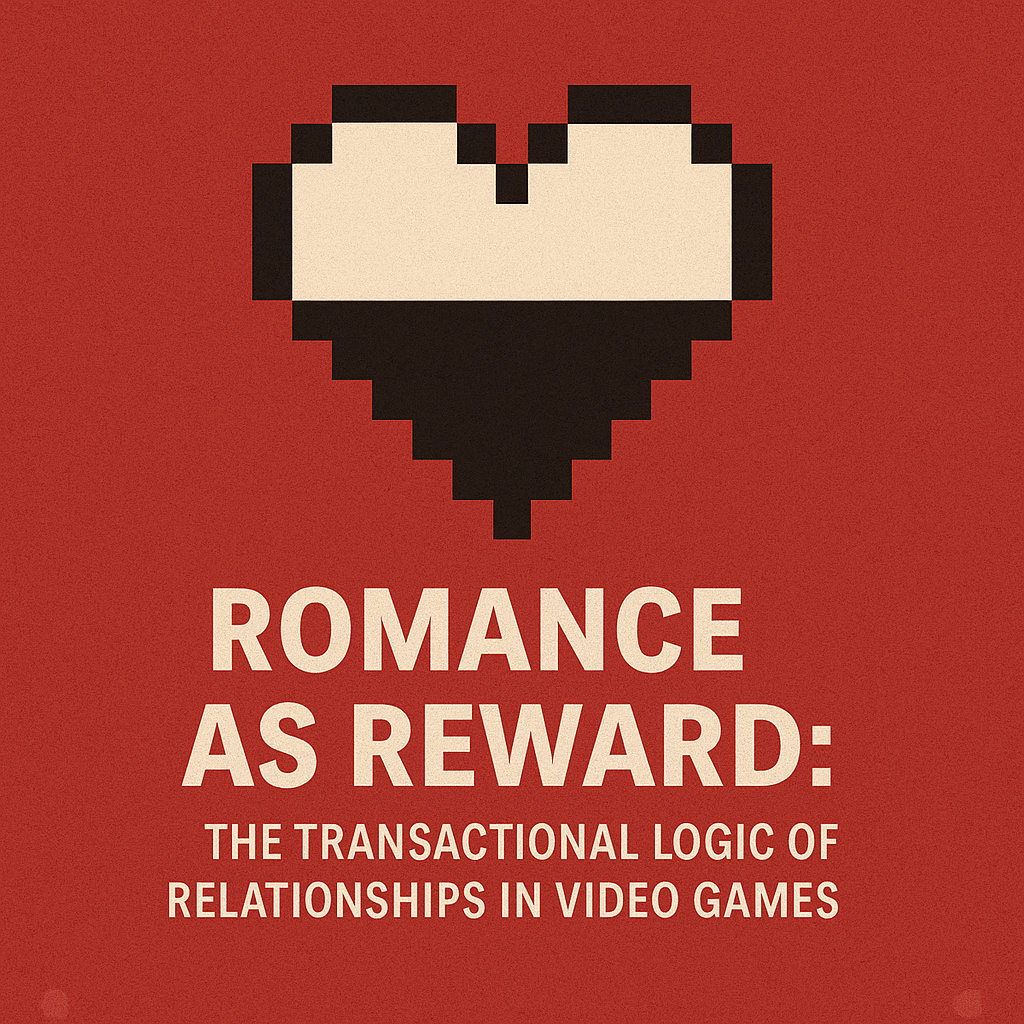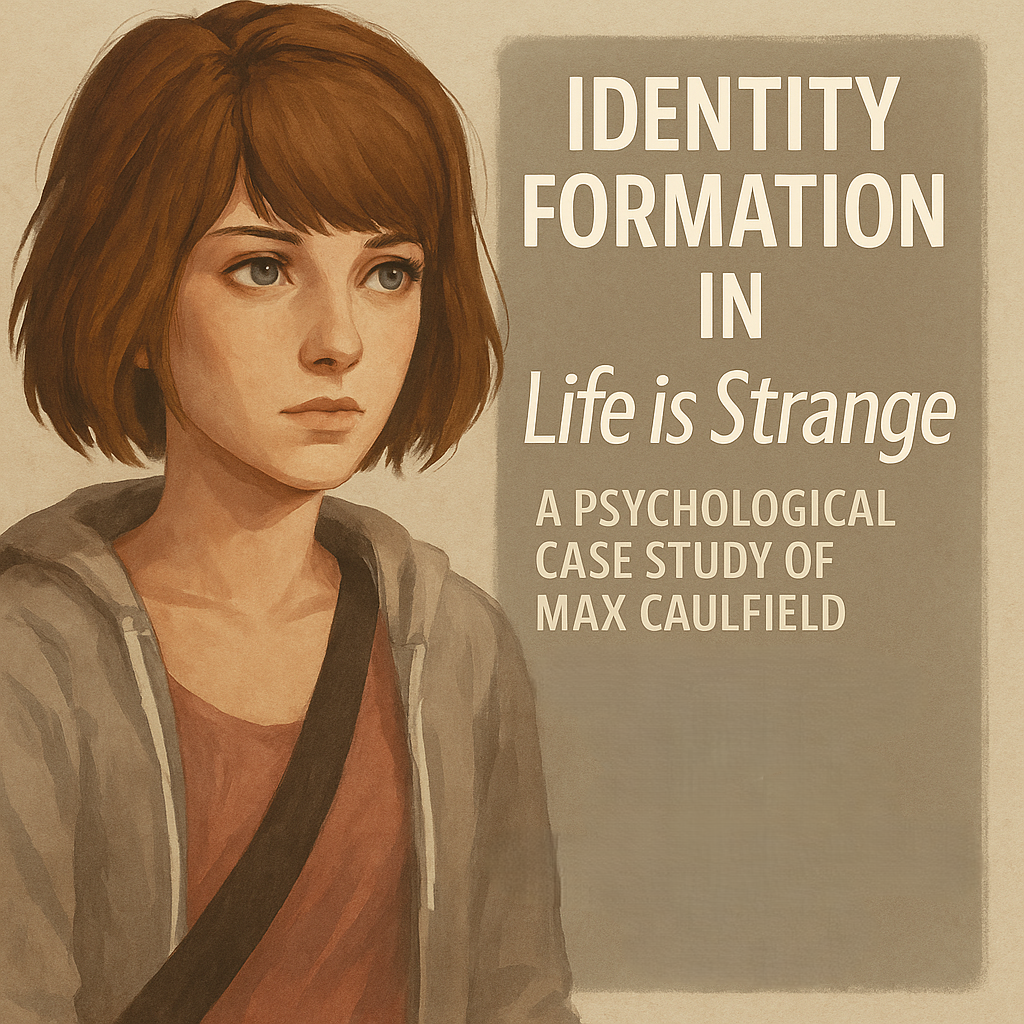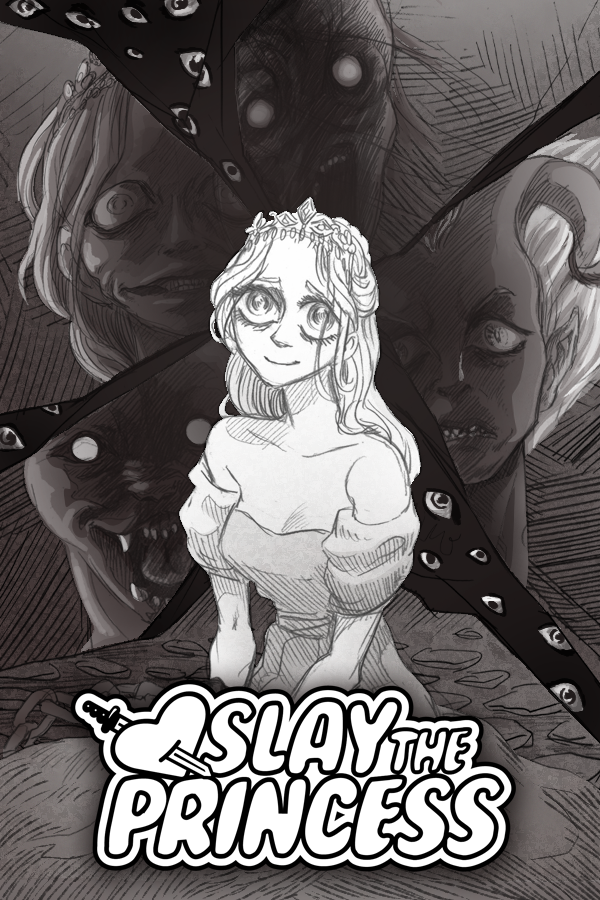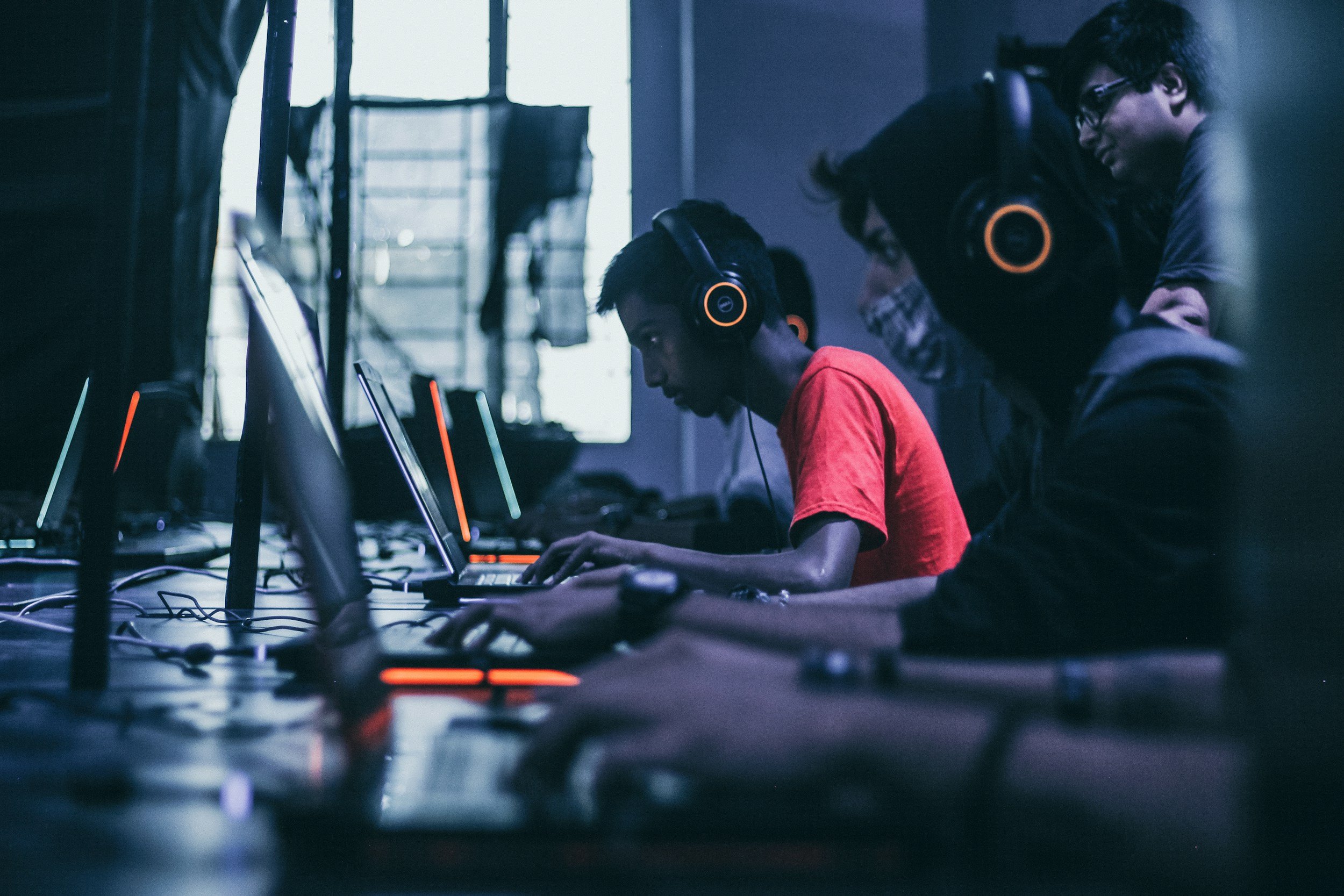The Iterated Vengeance Dilemma: A Critical Analysis of Forgiveness, Trauma, and Humanizing the Enemy in The Last of Us Part II
Spoilers Ahead for the Last of Us Part II
Part I
Contextualizing Narrative Dissonance and Moral Ambiguity
Few works of interactive media have provoked as much intense debate as The Last of Us Part II (TLoU2). Released by Naughty Dog in 2020, the game immediately polarized audiences, earning critical acclaim for its technical achievement and narrative boldness while simultaneously igniting one of the fiercest culture wars in contemporary gaming. The controversy was not simply about whether the game was enjoyable or well-crafted; it was about whether players could stomach its refusal to deliver catharsis. Instead of reinforcing a familiar revenge fantasy, the story actively frustrates it. By forcing players to embody characters they hate, and by denying them the final act of violent retribution they expect, TLoU2 confronts its audience with the uncomfortable truth that cycles of violence cannot be satisfied through vengeance.
This introduction situates the game’s narrative strategy within the context of moral psychology, trauma studies, and media reception. It argues that TLoU2 should be understood not merely as a story about revenge, but as a deliberate psychological experiment in empathy and perspective-taking. By orchestrating what might be called an “iterated vengeance dilemma,” the game compels its players to repeatedly engage with cycles of retaliation, only to demonstrate that the only exit lies in forgiveness. To make this case, we must first examine how the game constructs brutality and ambiguity at the level of narrative, then explore the volatile fan reception as an extension of the very cycles it depicts, and finally establish an interdisciplinary framework capable of analyzing its ethical complexity.
Brutality and Ambiguity as Core Design
From the very outset, TLoU2 makes its intentions clear: this is not a story that will flatter the player’s desire for righteous violence. Joel Miller, the protagonist of the first game and a beloved father figure to Ellie, is killed in the opening act in an execution staged for maximum cruelty. The event is not a quick loss but a drawn-out spectacle. Players are not allowed the comfort of ambiguity; they watch as Joel is bludgeoned to death in front of Ellie, powerless to intervene. The act functions as both a trauma for the character and a wound for the audience, breaking the parasocial bond they had nurtured with Joel for nearly a decade.
Traditional revenge narratives would take this event as the spark for a satisfying arc of pursuit and retribution. But the game refuses such comfort. Instead, players are eventually forced to take control of Abby, Joel’s killer for nearly half of the game. This structural inversion is not an optional detour but a narrative imposition. Where most games offer power fantasies, TLoU2 withholds them, demanding that players sit with perspectives they would rather reject. The effect is what narratologists might call narrative dissonance: the tension between what players want and what the story forces them to endure.
Psychologically, this dissonance functions as a form of exposure. Just as therapists may expose patients to uncomfortable stimuli to destabilize rigid schemas, Naughty Dog deliberately destabilizes the player’s black-and-white moral judgments. Abby is introduced as the villain, but extended exposure to her life, her friendships, and her vulnerabilities erodes this simplistic label. By the time the game returns to Ellie’s perspective, the player has been forced to confront the possibility that both characters are simultaneously victim and perpetrator. The brutality of the story, then, lies not only in its depiction of violence but in its willingness to brutalize the audience’s assumptions.
The Polarizing Reception and the Crisis of Fandom
If the developers intended discomfort, the public reception confirmed their success. The weeks following release saw a storm of online hostility. Critics praised the game’s daring structure, but many players responded with outrage, accusing the developers of betrayal, manipulation, or even political agenda. The cast and creative team were subjected to harassment, threats, and vitriolic campaigns of disapproval.
This reaction was not incidental; it was bound up with the very themes of the story. For years, Joel and Ellie had been anchors for players, figures of moral certainty in a brutal world. Their relationship was not just narrative but parasocial: players had invested years of emotional energy in identifying with them. To have Joel killed early, and then to be forced to empathize with his killer, represented not just a narrative twist but a violation of this parasocial contract.
The sense of betrayal can be explained through psychological concepts of agency and attachment. Video games typically promise players a degree of control; they are interactive by definition. When TLoU2 demanded that players embody Abby and denied them the choice to kill her in the end, many felt robbed of agency. Similarly, attachment theory suggests that people form powerful bonds with fictional characters, akin to the bonds with real-world loved ones. The sudden loss of Joel thus triggered not just disappointment but grief and anger, intensified by the parasocial closeness fostered over seven years.
The irony is that the fandom’s outrage itself mirrored the very cycles of vengeance depicted in the game. Just as Ellie lashes out in retribution for Joel’s death, players lashed out against developers for taking Joel away. Online discourse became a war of reciprocal hostility, with each side escalating the rhetoric in a feedback loop of anger. The “dumpster fire” of fan reception was thus not external to the game’s themes but an extension of them, a living demonstration of how difficult it is to accept uncomfortable truths about human nature when faced with loss.
Methodology and Interdisciplinary Framework
To properly analyse TLoU2, it is not enough to describe its plot. The game’s complexity emerges from the intersection of psychology, narrative design, and ethics. This article will therefore employs an interdisciplinary methodology to capture its depth.
First, narrative analysis highlights the structural symmetry between Ellie and Abby, demonstrating how their arcs mirror one another and collapse simplistic distinctions between hero and villain. Second, cognitive psychology provides tools for understanding audience resistance, particularly anchoring bias (over-reliance on initial impressions), the halo effect (projecting moral goodness onto familiar characters), and agency violation (resentment at being denied control). Third, trauma theory helps illuminate how vengeance corrodes identity, disrupts memory, and perpetuates cycles of harm, both for characters and players. Finally, game theory, specifically the Iterated Prisoner’s Dilemma, models the destructive logic of retaliation and reframes forgiveness as a radical but strategically sound alternative.
This interdisciplinary lens treats the game not merely as entertainment but as an experiment in moral psychology. Its goal is to destabilize entrenched attachments, expose the futility of vengeance, and compel players to recognize the humanity of their enemies. In this sense, TLoU2 is less a revenge story than a simulation of the iterated vengeance dilemma: a repeated cycle of retaliation from which survival is possible only by breaking the chain.
Narrative Architecture: The Mirror and the Cycle of Retaliation
If the introduction of The Last of Us Part II unsettles the player by destabilizing their attachments, the middle sections of the game reinforce that disruption through an almost obsessive attention to symmetry. Naughty Dog structures the narrative as a hall of mirrors, where every violent act reverberates in reverse, every sanctuary has a counterpart, and every moment of grief is echoed by another. This deliberate architecture is central to the game’s argument: violence is not linear but cyclical, reproducing itself across characters and generations. To understand the full weight of the story, one must attend to these mirrored structures and the psychological burdens they impose.
Symmetry of Trauma: The Paternal Anchor
At the heart of TLoU2 lies the motif of parental loss. Both Ellie and Abby are defined by the sudden, violent deaths of their protective father figures. For Abby, the trauma occurs when Joel kills her father, Jerry, the Firefly surgeon poised to sacrifice Ellie in the hope of creating a cure. For Ellie, the trauma arrives when Abby herself kills Joel in a brutal execution. Each daughter becomes locked in grief, with revenge as their only outlet.
The symmetry here is deliberate. Joel and Jerry are foils: both are fathers who act from love but cause suffering to others. Their deaths catalyze parallel arcs of vengeance in their daughters, creating a narrative equation that is balanced but emotionally devastating. This is not accidental design; it is a form of narrative mirroring that forces the player to recognize the futility of assigning simple blame.
Psychologically, the structure resonates with trauma theory. Cathy Caruth describes trauma as an event that resists assimilation into narrative memory, instead repeating itself in haunting, compulsive re-enactments. Both Ellie and Abby embody this repetition: unable to narrativize their losses as meaningful, they replay the trauma through cycles of violence. In this sense, their revenge quests are not quests for justice but attempts to reassert control over uncontrollable loss. Each act of violence becomes a failed attempt at narrative closure, which only generates new traumas for others.
The most striking moment of symmetry occurs when Ellie, during her confrontation in the Seattle theater, reveals to Abby: “There is no cure because of me.” Until this moment, Abby has justified Joel’s murder as righteous revenge against a selfish man who destroyed the world’s last hope for salvation. Now she is forced to realize that Joel acted not out of sadism but out of paternal love, the very motive that drives her own actions. The recognition destabilizes her moral certainty. The symmetry collapses her hatred, leaving her with a painful recognition: she and Ellie are trapped in identical tragedies.
Paired Sanctuaries and Symbolic Habitats
Beyond their traumas, the game reinforces mirroring through the characters’ sanctuaries, the rare places where they feel peace. For Ellie, this sanctuary is the Wyoming Museum, a terrestrial space filled with dinosaurs, spacesuits, and remnants of a childhood she never truly had. The museum represents innocence, nostalgia, and an almost Edenic moment of safety. It is where she and Joel share their most tender interactions, and where Ellie briefly touches a sense of wonder uncorrupted by violence.
Abby’s equivalent is the Seattle Aquarium, a hidden, aquatic refuge where she and Owen dream of escaping the endless war between factions. Whereas Ellie’s museum looks backward to an idealized past, Abby’s aquarium looks forward to a fragile future, one where survival might be possible beyond endless cycles of retaliation.
These sanctuaries are not just narrative spaces but symbolic habitats. Ellie’s is terrestrial, grounded, tied to history and memory. Abby’s is aquatic, fluid, vulnerable, and oriented toward renewal. The symbolism extends to the characters themselves. Abby begins the story embodying the crab: armored, defensive, scuttling sideways through life under the weight of guilt and rage. Through her bond with Lev, she gradually shifts toward the tiger, a figure of protective strength and rediscovered compassion. Ellie, by contrast, increasingly resembles a predator stripped of context, a wolf whose pursuit of prey is relentless but hollow.
Psychologically, these sanctuaries also function as what Donald Winnicott called transitional spaces; environments where identity can be renegotiated away from the pressures of external violence. In these spaces, both women briefly recover their capacity for play, vulnerability, and love. Yet the fragility of these sanctuaries underscores the tragedy: in a world consumed by revenge, no sanctuary can endure.
Echoes of Violence: The Reproduction of Trauma
The most powerful narrative mirror in TLoU2 lies in its reproduction of violent acts across characters. Ellie’s torture and killing of Nora, dragged through spores and suffocated in agony, directly mirrors Abby’s execution of Joel. Both acts are fueled by grief, both are prolonged, and both leave the perpetrators morally shattered. In these moments, the line between aggressor and avenger collapses: the victim of violence becomes its perpetrator, perpetuating the trauma they sought to escape.
This escalation continues. Ellie’s murder of Mel, a pregnant woman, is her moral nadir. It not only mirrors Joel’s early loss of Sarah but also symbolizes the annihilation of future possibility. Ellie’s rage destroys not just individuals but potential generations, erasing the very thing Joel had once fought to preserve in protecting her.
At the same time, Abby’s arc replicates Joel’s redemption in Part I. Where Joel rediscovered humanity through fatherhood of Ellie, Abby does so through her bond with Lev, a Seraphite child cast out by his community. Protecting Lev becomes her path back to compassion, mirroring Joel’s path but inverted in perspective. The game thus asks the player: if Joel’s redemption made us forgive his atrocities, why should Abby not be afforded the same grace?
This mirroring is not only narrative but cognitive. Psychologists describe the phenomenon of moral disengagement, where individuals justify their own violence as necessary while condemning identical violence in others. TLoU2 dismantles this bias by showing us two arcs that are structurally identical. By forcing players to inhabit both perspectives, the game collapses the rationalizations that sustain moral disengagement, making it impossible to deny that Ellie and Abby are trapped in the same destructive cycle.
Narrative Symmetry as a Moral Trap
Taken together, the symmetry of trauma, sanctuary, and violence constructs what can be called a moral trap. The player cannot easily identify a hero or villain because every action has its mirror, every justification its counterpart. This trap mirrors the logic of real-world conflicts, where cycles of violence generate symmetrical grievances and each side sees itself as justified.
The brilliance of TLoU2 is that it forces players into this trap rather than allowing them to avoid it. By inhabiting both Ellie and Abby, players must confront their own biases and attachments. They must reconcile the dissonance between their hatred for Abby and the empathy they feel after embodying her. They must acknowledge that Ellie, once their moral anchor, becomes monstrous in her pursuit of vengeance. In doing so, the game denies the comfort of righteous violence and insists on the more painful truth: in cycles of revenge, all sides become both victim and perpetrator.
Through its architecture of symmetry, The Last of Us Part II dismantles the binary logic of hero and villain. By pairing paternal loss, by constructing sanctuaries of memory and hope, and by mirroring acts of cruelty, the game insists that vengeance is not a straight line but a recursive spiral. Psychologically, this structure exposes the mechanisms of trauma and moral disengagement, forcing players to confront their own complicity in cycles of hatred.
Cognitive Reframing: Empathy, Shared Trauma, and Player Resistance
The central gamble of The Last of Us Part II is not simply its symmetrical structure but the extent to which it forces players to reframe their perceptions of enemy and ally. Unlike traditional narratives, where perspective is fixed and loyalties are stable, TLoU2 interrupts attachment, inserts dissonance, and requires players to occupy the emotional lives of those they despise. In doing so, it becomes less a story of revenge than an experiment in empathy, an effort to test whether players can reconfigure their moral judgments when confronted with uncomfortable truths. Yet this effort encounters powerful psychological resistance, exposing the cognitive biases that govern how humans process grief, loyalty, and justice.
Ludonarrative Techniques for Forced Empathy
At the heart of the game’s design is an audacious structural move: nearly half the playtime is devoted to embodying Abby, the character who murdered Joel. Importantly, this is not a brief sequence designed to generate curiosity; it is an extended, eight plus hour campaign filled with exploration, relationships, and moral choices. By the end of this arc, players have no choice but to inhabit Abby’s subjectivity. They see her vulnerabilities, her relationships with Owen and Mel, her complicated allegiance to the WLF, and most crucially, her bond with Lev.
From the standpoint of moral psychology, this design functions as a form of perspective-taking. Research in empathy studies shows that extended exposure to another person’s perspective, especially when accompanied by shared tasks or goals, tends to reduce prejudice and increase compassion. The game exploits this mechanism by forcing players to engage in mundane, even tender acts with Abby: playing with animals, joking with friends, sharing moments of intimacy. These activities disrupt the simplistic image of her as “villain,” compelling a slow erosion of hatred.
Naughty Dog further enhances this reframing through deliberate contrasts. Abby, despite her muscular physique and violent reputation, is revealed to have an ordinary, relatable phobia, a fear of heights. This vulnerability humanizes her in ways that transcend combat. Similarly, the game underscores Abby’s capacity for kindness, especially toward animals and toward Lev, while simultaneously depicting Ellie’s increasing ruthlessness. In one particularly striking moment, players watch Ellie kill one of Abby’s dogs, an act that feels needlessly cruel given as Abby we bond and see the dog as more than just a stock enemy. Such juxtapositions destabilize moral expectations, making it increasingly difficult for players to maintain an unambiguous hatred.
Cognitive Barriers: Why Players Resist
Despite these efforts, the game’s reception demonstrates that many players resisted this reframing. Cognitive psychology helps explain why. Three key phenomena; anchoring bias, the halo effect, and agency violation illuminate the mechanisms behind audience rejection.
Anchoring Bias. Humans tend to rely disproportionately on the first piece of information they receive when making judgments, a phenomenon known as anchoring. For players, the anchor was the emotional bond established in The Last of Us Part I with Joel and Ellie. Over the course of seven years, these characters became moral touchstones, anchors of loyalty and identification. When the sequel demanded that players re-anchor themselves around Abby, many found the task impossible. The initial bond was simply too strong, leading to outright rejection of Abby’s legitimacy as a protagonist.
The Halo Effect. Closely related is the halo effect, wherein the positive qualities of a figure (in this case, Joel’s devotion and protectiveness) extend into global judgments of morality. Because players remembered Joel primarily as the loving father figure of Part I, they were inclined to minimize his atrocities, the murder of Jerry, the slaughter of Fireflies and to interpret Abby’s vengeance as disproportionate cruelty. Similarly, Ellie’s growing brutality was excused or overlooked because her halo had already been secured by her role as Joel’s beloved surrogate daughter. Abby, lacking this halo, was judged far more harshly for comparable acts of violence.
Agency Violation. Perhaps the most incendiary psychological barrier was the perception of lost agency. Video games, unlike novels or films, create an implicit contract with players: you will not only witness events but shape them. TLoU2 broke this contract by removing choice at two critical junctures. First, players were forced to inhabit Abby against their will, often described in reviews as being “coerced into playing the villain.” Second, in the final confrontation on the Santa Barbara beach, players who desired cathartic retribution were denied it. Ellie’s decision to spare Abby was non-negotiable. From a narrative perspective, this was Ellie’s act of reclaiming moral agency. But from the player’s perspective, it was an act of disempowerment, the story taking control away.
Together, these psychological barriers explain much of the outrage directed at the game. What critics often dismissed as fan “entitlement” was, in fact, a predictable collision between narrative intent and cognitive bias. By design, the game violated the very mechanisms that usually generate satisfaction in interactive storytelling.
The Paradox of Manipulation
The accusation most frequently levelled against TLoU2 was that it was manipulative, that its insistence on empathy, its refusal of catharsis, and its symmetrical framing were contrived mechanisms to push an agenda. Yet this critique, while emotionally valid, ironically confirms the game’s achievement. All narrative art is manipulative to some degree; the question is whether that manipulation reveals or obscures truth.
In this case, the manipulation forces players to confront their own biases. The sense of frustration stems not from narrative incoherence but from psychological dissonance. The human mind resists abandoning established anchors, resists extending empathy to enemies, and resists surrendering agency. The game deliberately triggers these resistances in order to expose them. In other words, the discomfort is the point.
Moral psychology provides further insight here. Kohlberg’s stages of moral development suggest that individuals often operate at a “conventional” level, where morality is defined by loyalty to group norms and familiar authorities. In TLoU2, players clung to Joel and Ellie as moral authorities. By forcing them to empathize with Abby, the game attempts to push players toward a “post-conventional” level, where morality is defined not by loyalty but by universal principles such as empathy, justice, and recognition of shared humanity. The anger that greeted the game reflects the difficulty of making this leap.
Empathy as Cognitive Labor
To play TLoU2, then, is to engage in a form of cognitive labour. It is not enough to perform the mechanical tasks of combat and exploration; the player must also wrestle with dissonant emotions, conflicting loyalties, and destabilized attachments. For some, this labour produces growth, the recognition that enemies are human, that cycles of vengeance are futile, and that forgiveness is possible. For others, the labour produces resentment, a refusal to cooperate with the game’s demands.
From a trauma-theory perspective, this divide makes sense. Trauma disrupts narrative continuity, and attempts to reframe trauma often provoke resistance. Abby’s arc asks players to accept that Joel, their surrogate father figure, was someone else’s monster. Ellie’s arc asks them to accept that vengeance transforms victims into perpetrators. Both demands require players to revise cherished narratives, a process psychologists call cognitive restructuring. But cognitive restructuring is painful; it challenges identity, loyalty, and memory. Not all players were willing to undergo this process.
TLoU2’s most radical move lies not in its plot twists but in its manipulation of player psychology. By forcing perspective shifts, by exploiting and frustrating cognitive biases, and by denying agency at critical junctures, the game turns empathy into a demand rather than an option. This explains both its critical acclaim and its widespread rejection: those willing to engage in the cognitive labor experienced a story of profound moral complexity, while those resistant to reframing experienced only manipulation and betrayal. Either way, the game succeeded in making empathy, trauma, and perspective-taking central to its interactive experiment.
Part II
The Physical and Psychological Toll of Revenge
If narrative symmetry in The Last of Us Part II demonstrates how violence reproduces itself across characters, Ellie’s downward spiral illustrates the cost of living within that cycle. The game depicts vengeance not as a triumphant assertion of agency but as a corrosive force that eats away at body, mind, and relationships. By the final act, Ellie is nearly unrecognizable, not because she has grown stronger, but because the pursuit of retribution has hollowed her out. What remains is a haunting portrait of trauma’s toll, a portrait that resonates with both clinical descriptions of post-traumatic stress and cultural archetypes of the avenger undone by their own obsession.
Physical Deterioration as Embodied Symbolism
Video games are uniquely suited to externalize inner states through visual design. In Ellie’s case, the deterioration of her body becomes a canvas on which her psychological corrosion is inscribed. Over the course of her journey, she becomes visibly thinner, scarred, and weathered. By the final confrontation in Santa Barbara, she is gaunt and malnourished, her body consumed by the compulsive drive for revenge.
The most striking symbol of this deterioration is her loss of two fingers during the final fight with Abby. On a literal level, it is a gruesome consequence of battle. On a symbolic level, it represents the severing of her last connection to Joel. Throughout the game, Joel’s guitar serves as a motif of memory and love, an instrument of solace in a brutal world. By losing the ability to play it properly, Ellie loses the capacity to keep Joel alive within her through music. Revenge, in this sense, amputates not only her body but her memory, leaving her with the shell of survival but without the means to preserve the intimacy she once cherished.
This intertwining of physical and psychological injury reflects trauma theory’s emphasis on embodiment. As Bessel van der Kolk observes in The Body Keeps the Score, trauma is not merely an event remembered but an ongoing physiological state, inscribed into the body’s rhythms and capacities. Ellie’s gauntness, her scarring, and ultimately her mutilation reflect how vengeance has made her body the site of trauma’s persistence.
By contrast, Abby’s emaciation in Santa Barbara is the product of external imprisonment and starvation under the Rattlers. Ellie’s deterioration is largely self-inflicted, the direct consequence of obsession. This juxtaposition reinforces the idea that revenge is not only a wound inflicted by others but one perpetuated by the self.
PTSD and Compulsion
Ellie’s relentless pursuit of Abby is best understood through Post-Traumatic Stress Disorder (PTSD). PTSD is characterized by intrusive memories, hypervigilance, emotional numbing, and compulsive re-enactment of trauma. All of these symptoms define Ellie’s arc.
After Joel’s death, Ellie suffers flashbacks and intrusive images, often triggered by seemingly mundane cues. Her dreams return her to the moment of his execution, replaying the scene in ways that leave her shaken and restless. Hypervigilance manifests in her inability to settle in Jackson: even in moments of relative safety with Dina and J.J., she remains on edge, haunted by the possibility of unfinished business. Her decision to abandon her family to pursue Abby is less an act of will than a compulsion, a desperate attempt to resolve intrusive trauma through re-enactment.
Clinical psychology notes that trauma survivors often attempt to regain mastery over their memories by recreating the conditions of trauma in new contexts, an unconscious effort to “win” where once they were powerless. Ellie embodies this compulsion. Her drive to kill Abby is not primarily about justice but about reasserting control over the moment of Joel’s death, when she was immobilized and forced to watch. Every act of violence becomes an attempt to rewrite that helplessness, yet each act only deepens her entrapment.
This explains why Ellie cannot stop even after achieving temporary stability. Her domestic life with Dina and J.J. offers love, safety, and purpose. Yet unresolved trauma erodes her capacity to accept peace. She abandons her family to continue the cycle, illustrating how PTSD corrodes not only memory but also the ability to inhabit the present.
Revenge and the Loss of Self
If revenge begins as an attempt to reclaim identity, it ends by eroding it. For Ellie, the cost of her quest is total: she loses Joel, Jesse, Dina, J.J., and even her capacity to preserve Joel’s memory through music. What remains is a hollowed self, defined less by who she is than by what she has lost.
The final confrontation with Abby is the culmination of this erosion. On the Santa Barbara beach, Ellie gains the upper hand. Rationally, she could achieve her long-sought vengeance. Yet in that moment, she experiences not triumph but recognition: to kill Abby would not restore Joel, nor repair the fractures in her life. It would only perpetuate the cycle she has already seen destroy others. By sparing Abby, Ellie asserts a fragile form of agency, not the agency of domination, but the agency of refusal.
This moment reflects the critical shift from retributive coping to acceptance coping. Retributive coping seeks to manage trauma by inflicting equivalent harm on others, a strategy that provides temporary relief but prolongs suffering. Acceptance coping, by contrast, involves acknowledging the irreversibility of loss and reorienting toward survival rather than restoration. Ellie’s choice is not framed as heroic or redemptive; it is painful, ambivalent, and leaves her materially diminished. Yet it is also the only path that allows her to survive her trauma without endlessly replicating it. This loss of self underscores the paradox of revenge: in seeking to reclaim what was taken, one often sacrifices the very qualities (love, memory, community) that make life worth protecting.
Through Ellie’s physical decline, her compulsive re-enactments of trauma, and her ultimate loss of identity, The Last of Us Part II presents revenge as a form of self-destruction. The scars and mutilations are not incidental; they are symbols of how vengeance consumes the body and hollows the soul. By sparing Abby, Ellie does not achieve reconciliation or restoration, but she does halt her own collapse. The game thus reframes forgiveness not as a sentimental act of moral purity but as a hard-won survival strategy; the only way to prevent vengeance from annihilating what remains of the self.
Game Theory and the Resolution of the Vengeance Cycle
The story of The Last of Us Part II is, at its core, an extended meditation on retaliation. Each death leads to another; each act of vengeance spawns a new grievance. To analyze this cycle, it is useful to borrow from game theory, particularly the Iterated Prisoner’s Dilemma (IPD), a model designed to study how cooperation and betrayal play out over repeated encounters. In the context of the game, the protagonists are locked in what we might call the Iterated Vengeance Dilemma: a series of confrontations where each character must choose between retaliation (defection) and restraint (cooperation). The tragedy is that both Ellie and Abby, bound by trauma, default to defection again and again. Their choices illuminate not only the psychological mechanics of vengeance but also the conditions under which forgiveness becomes a radical, strategically transformative act.
The Logic of the Iterated Prisoner’s Dilemma
The classic Prisoner’s Dilemma poses a simple scenario: two players must independently decide whether to cooperate or defect. If both cooperate, they achieve a moderate but mutually beneficial outcome. If one defects while the other cooperates, the defector gains maximum advantage while the cooperator suffers. If both defect, both incur heavy losses. While defection seems rational in a single round, repeated iterations favor strategies like “tit-for-tat,” in which players mirror each other’s moves, because cooperation produces higher long-term payoffs.
Applied to The Last of Us Part II, this framework captures the destructive spiral of revenge. Joel defects first by killing Abby’s father, Jerry, in order to save Ellie. Abby responds with defection, murdering Joel in retaliation. Ellie defects in turn, slaughtering Abby’s friends and allies. Each defection escalates the cycle, producing heavier losses with each round. From a game-theoretic perspective, both characters are locked in a tit-for-tat strategy that spirals toward mutual ruin.
Tit-for-Tat and the Breakdown of Cooperation
The tragedy of the Iterated Vengeance Dilemma lies in the fact that neither Ellie nor Abby possesses an omniscient perspective. Both believe their retaliations are justified, necessary to restore balance. In truth, however, the scale was already balanced: Joel’s killing of Jerry equaled by Abby’s killing of Joel. Yet because each character perceives themselves as the victim, they continue the cycle, unable to see that further retaliation only multiplies suffering.
Game theory teaches that tit-for-tat strategies work only when both parties value long-term cooperation. In TLoU2, the trauma of paternal loss distorts time horizons. Neither Ellie nor Abby is thinking in terms of long-term stability; both are consumed by the immediacy of grief and rage. Psychologically, trauma narrows perspective, reducing the ability to imagine future payoffs beyond the short-term need for retribution. Thus, the rationality of cooperation collapses, and the cycle of tit-for-tat continues unchecked.
The broader conflict between the WLF and the Seraphites mirrors this logic on a societal scale. Each side retaliates against the other for past atrocities, locked in a perpetual loop of grievances that render ideological distinctions meaningless. Just as in the microcosm of Ellie and Abby, the macroscopic war illustrates the self-perpetuating failure of retaliatory logic.
Ellie’s Final Choice as a Break in the Game
The climactic confrontation on the Santa Barbara beach represents the final iteration of the dilemma. Ellie and Abby are both physically diminished: Ellie malnourished from her obsession, Abby emaciated from captivity. Each is a husk of who they once were, their bodies bearing the costs of repeated defections.
When Ellie finally gains the upper hand, she faces a choice: defect by killing Abby, or cooperate by sparing her. Within the narrow logic of revenge, defection appears rational, Joel would be avenged, the cycle completed. But Ellie recognizes the futility of this reasoning. Killing Abby would not restore Joel, nor repair the losses she has suffered. It would only perpetuate trauma.
By sparing Abby, Ellie performs an act of unilateral cooperation. From a strictly game-theoretic standpoint, unilateral cooperation is irrational in the short term, as it risks exploitation. But in the context of an iterated cycle, it represents the only move capable of breaking the chain. Ellie abandons the zero-sum game of vengeance and embraces what might be called a meta-strategy; redefining the rules of engagement altogether.
Psychologically, this decision can be understood as a transition from retributive to restorative logic. In trauma theory, healing often requires relinquishing the fantasy of reversal, the belief that one can undo loss by inflicting equivalent suffering. Ellie’s refusal to kill Abby represents precisely this relinquishment. It is less about forgiveness as moral absolution and more about forgiveness as survival, a choice to prioritize self-preservation over endless retribution.
Forgiveness as Strategic Non-Rationality
Forgiveness in The Last of Us Part II is not sentimental. It does not restore harmony or erase grievance. Instead, it functions as what economists might call a non-rational but adaptive strategy. It breaks the destructive logic of tit-for-tat by introducing a choice that cannot be reciprocated in kind. Abby, spared, can only flee with Lev. The game ends not with reconciliation but with the possibility of survival outside the cycle.
This redefinition of forgiveness aligns with the psychological literature on compassion. Compassion is often described as “costly” in the short term, requiring individuals to set aside justified grievances. Yet in evolutionary terms, compassion sustains cooperation and community, making it adaptive in the long run. Ellie’s choice exemplifies this paradox. It denies her the short-term satisfaction of revenge, but it is the only path that preserves the possibility of a future not consumed by grievance.
By framing the cycle of vengeance as an Iterated Prisoner’s Dilemma, The Last of Us Part II reveals the unsustainable logic of retaliation. Joel’s defection set the cycle in motion, Abby’s mirrored it, and Ellie perpetuated it. Each move inflicted escalating costs without resolving the underlying trauma. The beach confrontation represents the game’s radical intervention: Ellie breaks the cycle by choosing cooperation over defection, survival over annihilation. Forgiveness emerges not as moral triumph but as strategic necessity, the only move capable of ending the iterated vengeance dilemma.
Broader Implications: Real-World Conflicts and Transitional Justice
Although The Last of Us Part II unfolds in a fictional post-apocalyptic America, its resonance extends far beyond the realm of survival horror. The game’s insistence on the futility of revenge and the necessity of breaking cycles of violence speaks directly to real-world struggles with war, justice, and reconciliation. By dramatizing how vengeance perpetuates suffering, it becomes a cultural parable for conflicts where historical grievances metastasize across generations. At the same time, its resolution — fragile, painful, but necessary — echoes the logic of transitional justice, where healing is achieved not through retribution but through acknowledgement, amnesty, and a refusal to perpetuate harm.
Cyclical Warfare as a Microcosm of History
The ongoing war between the Washington Liberation Front (WLF) and the Seraphites offers a macrocosm of the very dynamics playing out between Ellie and Abby. Neither faction remembers a clear beginning to the conflict. Each act of violence is framed as retaliation for the other side’s prior atrocities. Ambushes are answered with massacres, executions with counter-strikes. What ideology separates them, secular militarism versus religious zealotry becomes less important than the cycle of vengeance itself.
This dynamic mirrors countless real-world conflicts, from sectarian wars to ethnic disputes. The political scientist Robert Axelrod, whose work on the Iterated Prisoner’s Dilemma shaped game theory, emphasized how cycles of retaliation can trap communities in what he called “the shadow of the future.” When each side expects the other to defect, cooperation becomes unthinkable, and hostility reproduces itself indefinitely.
Psychologically, such conflicts are sustained by what trauma scholars call transgenerational transmission of trauma. The pain of one generation; massacres, expulsions, humiliations is passed on to the next, not through direct memory but through stories, rituals, and inherited grievances. The Seraphite children who grow up hearing about WLF atrocities are primed to hate, just as Abby inherits the trauma of her father’s death, and Ellie inherits the trauma of losing Joel. The cycle is not simply chosen; it is inherited.
The game literalizes this inheritance through Tommy, Joel’s brother, who remains trapped in the cycle long after Ellie’s refusal. His physical injury, the loss of an eye becomes a literal fulfilment of the adage “an eye for an eye leaves the whole world blind.” It is a grim reminder that vengeance promises justice but delivers only mutilation.
Transitional Justice: Reconciliation Beyond Retribution
If cycles of violence cannot be broken through retaliation, how can they be addressed? Here, the field of transitional justice offers a useful lens. Transitional justice refers to mechanisms societies use to reckon with widespread violence after periods of dictatorship, war, or genocide. While retributive models focus on punishment, restorative models emphasize truth-telling, acknowledgement, and reconciliation.
One of the most famous examples is South Africa’s Truth and Reconciliation Commission (TRC), which sought not to punish every perpetrator of apartheid-era crimes but to create a collective narrative of trauma. Amnesty was granted in exchange for full disclosure, with the idea that acknowledgement could heal wounds more effectively than endless retribution. The TRC’s approach was controversial but recognized the impossibility of prosecuting every act without collapsing the fragile new democracy into renewed conflict.
Ellie’s decision to spare Abby functions as a kind of personal TRC. In a world without institutions of justice, her only option is internal reconciliation. By choosing not to kill Abby, she acknowledges the futility of revenge and refuses to perpetuate the cycle. This is not forgiveness in the sentimental sense, Ellie does not embrace Abby or absolve her of guilt, but it is forgiveness in the strategic sense: a refusal to carry the cycle further. It is amnesty as survival.
What the game dramatizes is that vengeance is a zero-sum system, while reconciliation, however incomplete, opens the possibility of a non-zero future. Ellie’s choice creates space for survival; for Lev and Abby to continue their lives, and for herself to step away from the abyss, even at the cost of her home and family.
Bias, Dehumanization, and the Challenge of Empathy
The game also serves as a mirror for the psychological biases that make reconciliation difficult in reality. As Section III explored, players resisted empathizing with Abby because of anchoring bias and the halo effect. Similar mechanisms operate in real-world conflicts. Communities cling to founding traumas as anchors, refusing to reframe their identity outside of victimhood. Positive halos are extended to one’s own group, while the enemy is cast as irredeemably monstrous.
Dehumanization intensifies this process. In warfare, enemies are often reduced to caricatures; “snakes,” “dogs,” “vermin” which justifies violence against them. TLoU2 deliberately undermines this process by giving names, backstories, and emotional depth to characters who would normally be faceless NPCs. Even the simple detail of enemies calling out each other’s names when killed forces players to confront the humanity behind the “enemy AI.” It is a small but potent intervention against dehumanization, one that has direct parallels to peacebuilding efforts in the real world, where storytelling and humanization are essential to breaking cycles of hate.
The resistance players felt toward these techniques reflects the same difficulties communities face in practice. It is psychologically easier to cling to grievances than to extend empathy across lines of violence. Yet the game insists that empathy is the only path forward, however uncomfortable.
Forgiveness as Survival, Not Moral Purity
One critique levelled against the game is that it flattens differences, implying that “both sides” are equally guilty. Critics worry this promotes a false moral equivalence, minimizing the ideological stakes of conflicts. But this reading misinterprets the game’s aim. TLoU2 does not argue that Joel and Abby, or the WLF and Seraphites, are identical in ideology or context. Instead, it argues that once violence enters a cycle of retaliation, the outcomes are functionally equivalent. The original cause, whether justified or not becomes irrelevant in the face of escalating trauma.
In this sense, forgiveness is not about declaring both sides equally wrong or equally right. It is about recognizing that continued retaliation ensures mutual destruction. Forgiveness is reframed not as sainthood but as the most pragmatic response to an impossible situation.
This reframing resonates with real-world survivors who choose reconciliation not because it feels just, but because the alternative is endless suffering. In post-conflict societies, forgiveness is often the only path to liveable futures, even when it leaves wounds unhealed.
Simply Put
The Last of Us Part II is not a story that offers comfort, but one that strips it away. From its opening blow, Joel’s brutal execution to its final, hollow sparing of Abby, the game unsettles rather than satisfies. Yet this very refusal of catharsis constitutes its achievement. Through narrative symmetry, it demonstrates the recursive nature of trauma: Ellie and Abby are mirrors, each motivated by paternal loss, each perpetuating cycles of vengeance. Through its ludonarrative design, it forces players to inhabit the subjectivity of the enemy, destabilizing entrenched attachments and exposing the fragility of empathy. Through its depiction of Ellie’s bodily and psychological deterioration, it externalizes the self-destructive cost of revenge. And through the lens of game theory, it models retaliation as an Iterated Prisoner’s Dilemma that can only be escaped through the non-rational leap of forgiveness.
The backlash against the game, accusations of manipulation, betrayal, or ideological agenda confirms rather than undermines its success. Audience resistance can be explained by anchoring bias, halo effects, and the psychological discomfort of agency violation. These reactions are not flaws in design but symptoms of its potency: the game provokes not because it fails to tell a coherent story, but because it succeeds in forcing players to confront their own biases, attachments, and desire for vengeance.
The game’s ending denies catharsis but delivers something subtler: the possibility of survival beyond vengeance. When Ellie spares Abby, she does not forgive her in any sentimental sense, nor does she reconcile with her own losses. Joel remains dead, Dina and J.J. are gone and her fingers are severed. She returns to an empty house, stripped of everything she once sought to protect.
And yet, within this emptiness lies a fragile form of agency. For the first time since Joel’s death, Ellie acts not out of compulsion but out of choice. By refusing to kill Abby, she rejects the logic of tit-for-tat, breaking the cycle that had defined her. In psychological terms, this is the shift from retributive coping to acceptance coping, from compulsive re-enactment of trauma to the painful acknowledgement of irreversibility. Forgiveness here is not triumph but surrender, not reconciliation but survival. It is, paradoxically, an assertion of control: the only way Ellie can reclaim herself is by refusing to be governed by vengeance.
In the landscape of video game narratives, The Last of Us Part II occupies a singular place. Few games have dared to so aggressively alienate their players, to insist on empathy for the enemy, or to deny the release of victory. By doing so, it expands the medium’s capacity for moral and psychological complexity. It demonstrates that interactive storytelling need not be about empowerment; it can also be about discomfort, about forcing players to sit with dissonance and ambiguity.
Its legacy is thus twofold. First, as a narrative experiment, it proves that video games can serve as profound vehicles for exploring trauma, vengeance, and forgiveness, not through exposition alone, but through embodied experience. Second, as a cultural artifact, it reflects the challenges of empathy in a polarized world. Just as players resisted extending compassion to Abby, communities in conflict resist humanizing their enemies. Just as players felt betrayed when denied agency, societies cling to revenge as if it were the only form of control available.
In both cases, the lesson is the same: cycles of vengeance cannot be won, only broken. And breaking them requires the most difficult of choices — the choice to forgive, not because the enemy deserves it, but because survival demands it.
Ultimately, The Last of Us Part II is not about Joel, Abby, or even Ellie. It is about the human tendency to confuse vengeance with justice, to believe that retribution can restore what was lost. By exposing the futility of this belief, the game redefines forgiveness as neither moral purity nor weakness, but as a radical, strategic act — the only viable escape from the iterated vengeance dilemma. Its refusal to flatter players with victory cements it as one of the most challenging and significant works of interactive storytelling, a text that dares to confront us with the uncomfortable truth that our enemies are human, and that the hardest choice of all is not to kill, but to let live.
References
Axelrod, R. (1984). The evolution of cooperation. Basic Books.
Kohlberg, L. (1981–1984). Essays on moral development (Vols. 1–3). Harper & Row.
Naughty Dog. (2020). The Last of Us Part II [Video game]. Sony Interactive Entertainment.
Winnicott, D. W. (1971). Playing and reality. Tavistock Publications.
Prisoner's dilemma - Wikipedia
Why Are Fans Upset About ‘The Last of Us’ Season Two?
The Last of Us 2: Joel and Abby's Striking Parallels Explained
South Africa Establishes a Truth and Reconciliation Commission | Research Starters | EBSCO Research

